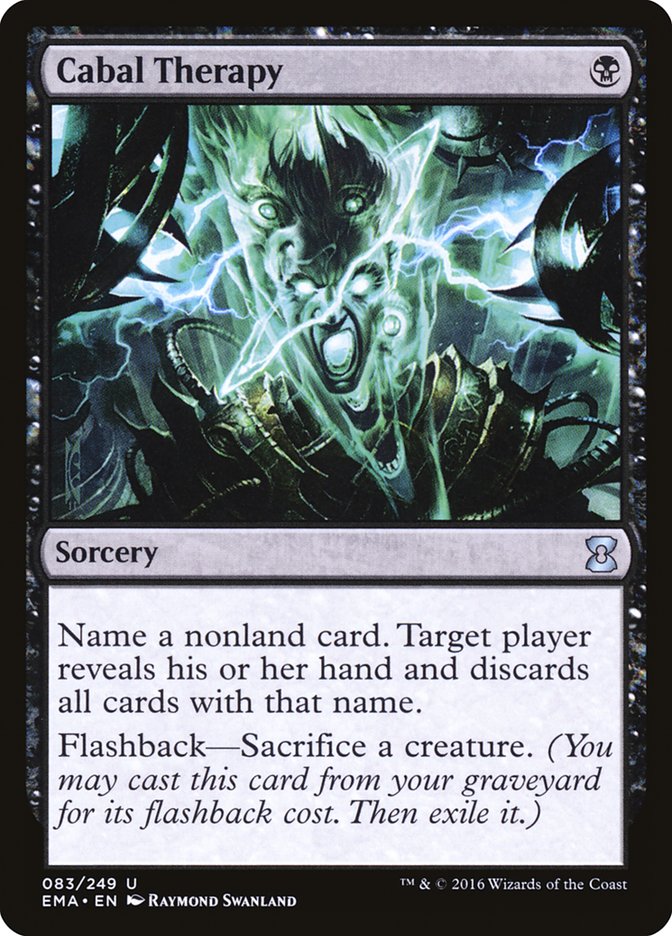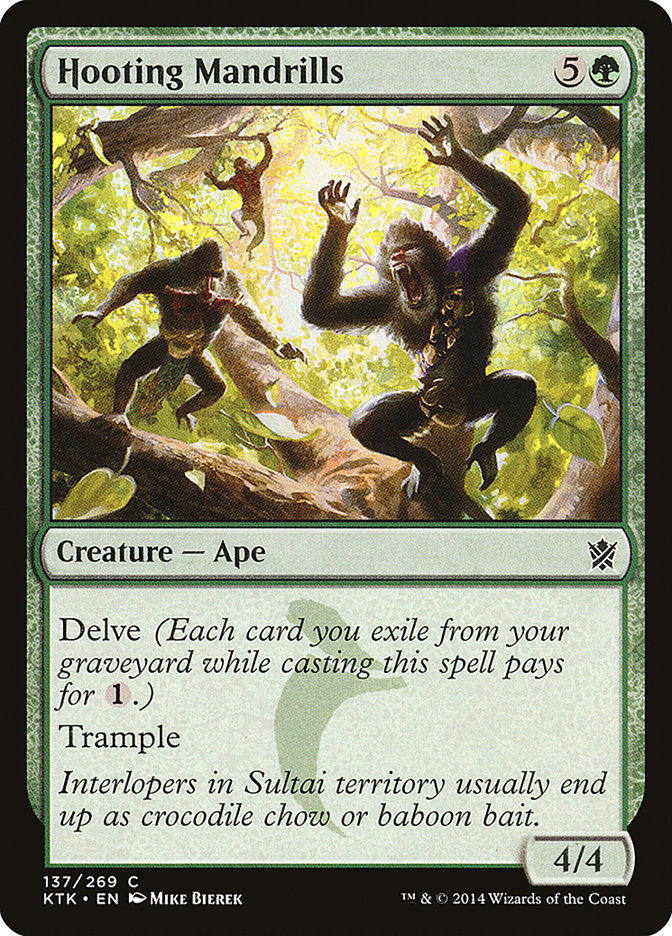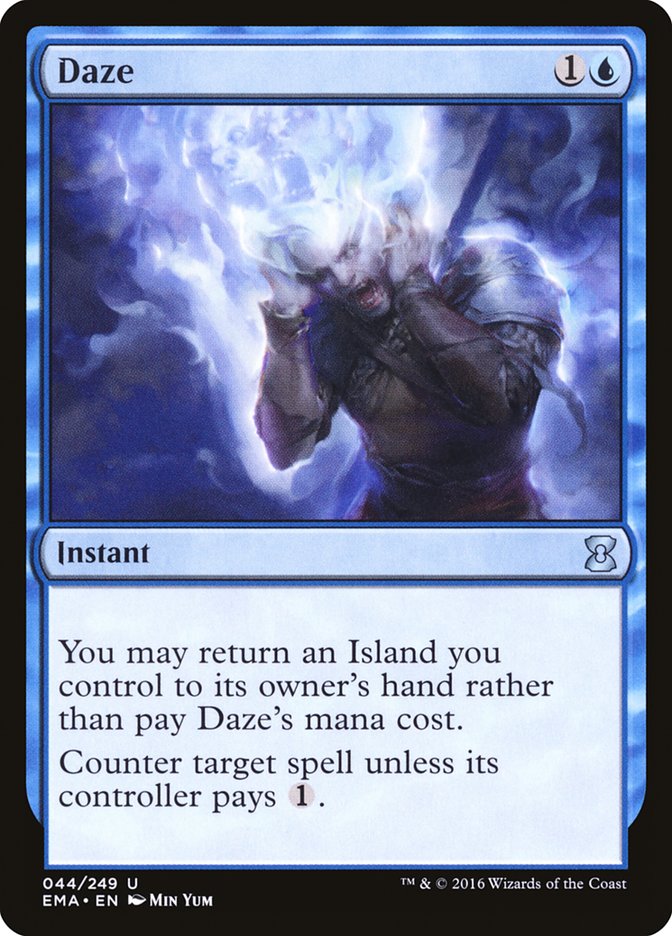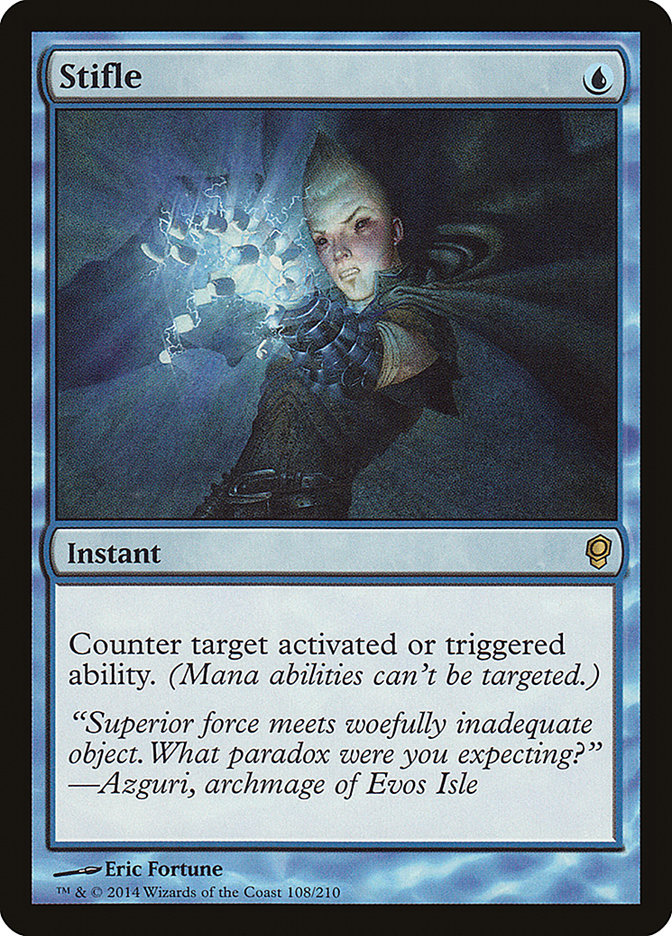Hello, fellow Legacy lovers! I am thrilled to be writing about a format and an archetype that are both near and dear to my heart. For those of you who have closely followed my Magic career, you know that I am a huge fan of Delver of Secrets in Legacy.
I love you.
I have played basically every iteration of Delver you can think of. Everything from Jeskai, Sultai (with Hymn to Tourach and the Stifle build), Grixis, U/R, and of course good old RUG (yes, I’m aware it’s 2017 and we refer to this as Temur now, but I will forever live the RUG Life).
I have been playing Delver almost exclusively since I began playing the format back in 2012. The archetype has always been Tier 1 and has never felt like a bad choice to play. It almost feels like a Jund deck in that regard, where every matchup is close and it’s never the worst call for the event. Ever since the banning of Sensei’s Divining Top, Delver has become arguably Legacy’s best deck. The build of the deck that is most popular is without a doubt Grixis “Pyro” Delver.
Creatures (15)
Lands (18)
Spells (27)

Here is the list fellow Delver aficionado Bob Huang used to Top 8 the Legacy Championship in Pittsburgh just last weekend. Some noteworthy things are the fact that he’s removed the maindeck copies of Cabal Therapy that started popping up last year for an extra Spell Pierce and another threat.
Most lists nowadays have two to three Young Pyromancers and one or two copies of True-Name Nemesis as additional resilient threats.
One small deckbuilding decision that I absolutely adore is the 2/2/2/2 split of blue fetchlands. Most people don’t think about doing this (understandably so), but it’s in case someone either Pithing Needles a fetchland or Surgical Extractions one. Believe me, it’s happened before and it will likely happen again. When it does, you’ll be thankful that you split up your fetches.
If I were going to recommend a Legacy newcomer a Delver list, it would without a doubt be Bob’s. I myself might even show up with a list that’s either very close or identical to this one. Grixis Delver shines against the combo decks, since Cabal Therapy is just so good against them. The combination of pressure, counters, and discard is potent.
Some people opt to play Stifle in their builds of this deck, and while that is a fine choice, most lists skip it. I prefer Stifle in the builds of Delver that play Tarmogoyf, since they hit harder and end the game quicker.
Temur Delver has traditionally been the version that best takes advantage of Stifle. Here is a hot new take on the old format staple that managed to take second place last weekend.
Creatures (11)
Lands (18)
Spells (31)

If you told me two years ago that you wanted to cut Tarmogoyf from your Temur deck for Hooting Mandrills, I would’ve said that you’re crazy. But the times have changed, and with the infamous “Czech Pile” or Four-Color Leovold becoming the premier control deck of the format, moving towards Hooting Mandrills makes a lot of sense.
Good news, budget Magic fans!
Like Gurmag Angler, it is dodges the best removal spells in the format, like Lightning Bolt, Fatal Push, and Abrupt Decay. On top of that, Hooting Mandrills is actually a very nice counter to the uptick in True-Name Nemesis in recent months, since it still tramples over for a cool three. It makes me happy to see someone else with Abrade in the Legacy sideboard as well, since that’s a card I’ve been talking about playing for months. Abrade has a lot of utility over Ancient Grudge, since it can kill a Mother of Runes or a Thalia, Guardian of Thraben, while also being able to kill things like Magus of the Moon or Goblin Rabblemaster against the big red decks. The card can also just be a two-mana removal spell, which is serviceable against a deck like Elves or even a Delver mirror.
Personally, I do not think now is the time to be playing Temur Delver. As much as I love Nimble Mongoose, Deathrite Shaman both beats it straight-up and is just a much better card. Temur shines when the Swords to Plowshares decks are at the top, but right now Legacy is a Deathrite Shaman world. If you really want to sleeve up your Tarmagoyfs, I’d suggest playing a Sultai Delver build similar to this one.
Creatures (13)
Planeswalkers (2)
Lands (20)
Spells (25)

This is the list Hans Jacob Goddik used to take down the Legacy Championship last weekend. This build of the deck got more popular when Miracles was dominant, since it could go toe-to-toe with it in the late-game. This was largely due to the presence of Liliana of the Veil, which Hans chose not to play this past weekend. Instead he opted for Liliana, the Last Hope, which I’m sure raised a ton of eyebrows.
But when you think about it, Liliana, the Last Hope is exactly what you want against Grixis Delver to clean up Young Pyromancer and friends. It also is quite nice against Four-Color Leovold too, since it rebuys your threats and kills Baleful Strix and Snapcaster Mage.
My only real qualm with the list is only three copies of Ponder. This is something I cannot and will never support in any build of Delver. Play four Ponder, people. I promise you won’t regret it.
All in all, Sultai Delver is going to give you more game in the fair mirrors, but your deck is just going to be clunkier than the other Delver builds, since your curve is higher and your manabase is more complicated, making it less likely for you to have the “Delver draw.”
Creatures (13)
Lands (16)
Spells (31)

Here is a new take on the less popular U/R Delver featuring the full set of Chart a Course! This list 5-0’ed a League under the Magic Online handle Hoppelars. (Two Ponders?! That’s just offensive).
We’ve seen a bunch of different takes on U/R in the past. Some feature Goblin Guide and heavy burn, some more prowess-oriented with Stormchaser Mage, and of course ones with Young Pyromancer.
The big draw to this build of the deck is that some games you get to basically just be a burn deck. Price of Progress is an important piece to this puzzle that allows you to steal games from out of nowhere. It also helps your Lands matchup, which is traditionally very tough for Delver.
However, my biggest problem with this build is the lack of Wastelands. Not only does the card just provide free wins, but it also plays extremely well with the rest of your deck. Being able to go Turn 1 threat followed by answering their play into Wastelanding their land is a super-powerful sequence that’s near-unbeatable for most decks. While this archetype does gain some clear advantages, I’ll be sticking to playing Wasteland in my Delver deck.
The last archetype I want to talk about is one that my buddy Kerry Foerst and I created ourselves.
Creatures (13)
Lands (18)
Spells (29)
- 4 Brainstorm
- 4 Lightning Bolt
- 4 Force of Will
- 4 Daze
- 3 Stifle
- 4 Ponder
- 2 Spell Pierce
- 1 Dismember
- 3 Thought Scour
Sideboard

The deck looks like and feels like the old builds of “RUG Delver.” We essentially just changed Nimble Mongoose to Deathrite Shaman and Tarmagoyf to Gurmag Angler (upgrades, if you ask me). I had joked after the banning of Dig Through Time that I was just going to jam four Gurmag Angler in my Legacy deck, but I didn’t think it would become a reality.
The idea came up on the way home from SCG Worcester last year, where Kerry made the Top 16 with stock Grixis Delver and mentioned that the Zombie Fish had overperformed all weekend. We built the deck online and proceeded to win 22 Delver mirrors straight before losing.
Like the old blue delve cards, Gurmag Angler is the most important thing in the mirror matches. It’s essentially unkillable, bigger than everything else on the battlefield, and ends the game very swiftly. Sadly, this build of the deck hasn’t seen a lot of press, but it has seen some success in the hands of both my good friend Ben Friedman (who won a Classic with the deck in August last year) and Tannon Grace, who made Top 8 at two Team Constructed Opens with it. Clearly we’re onto something here, whether or not it caught on!
The big advantages of this build are the fact that it’s advantaged in basically every midrangey blue mirror (from any build of Delver to Four-Color Leovold) and Chalice of the Void decks; even if you get locked, you can still throw your cards in the bin to cast a quick Gurmag Angler. I’d say I’m most likely to register this deck, since it gives me a distinct edge against the two most popular decks (Four-Color Leovold and Grixis Delver).
Regardless of the build you choose, you really can’t go wrong with any form of Delver.
Tricks of the Trade
I wanted to end this piece with a few key things I’ve learned about Delver that you should know before jumping into an event with the deck.
1. Always have four copies of Daze in your deck on the play.
That’s right, ladies and gents. I don’t care if your opponent has Aether Vial in their deck or is playing Elves. I don’t think there is a single matchup where you don’t want them all on the play.
2. Almost always lead on Deathrite Shaman.
Some people will cast a Turn 1 Delver over it for the faster clock. In most instances, this is just wrong, Deathrite just lets you explode ahead of your opponent on Turn 2. When your Turn 2 consists of three one-mana spells or something like Delver, Lightning Bolt, Wasteland, you are never losing that game.
3. Hands of just reactive cards are often traps.
Let’s say we open up a hand of three fetchlands, a Stifle, a Lightning Bolt, a Spell Pierce, and a Force of Will. It’s super-easy to look at that hand of lands and spells and keep. However, in my experience, these hands are almost always mulligans. Without pressure, these cards don’t really do anything by themselves. You almost always want either a threat or a cantrip in your opening hand.
4. If your Turn 1 option is to play a threat or hold up Stifle, play the threat.
This is an easy one, but one I see screwed up often. It’s very easy to just want to “get” your opponent and Stifle them out of the game.
The problem with this logic is that too much can go wrong. Plains into Aether Vial, Tropical Island Noble Hierarch…hell, just Underground Sea into Deathrite Shaman makes you look like an idiot. Stifle is better when you’re putting them under a clock anyway, and it’s a very easy card to play around otherwise.
I hope this article was informative for those of you who are new to Legacy and even those who have been playing the format for years. Sadly it’s a format I don’t get to play much these days, but it’s one that will always have a special place in my heart. It might be the weekend before Halloween, but it sure feels like Christmas when I get to play Legacy. Good luck at SCG Washington DC, and I’ll see you there!









